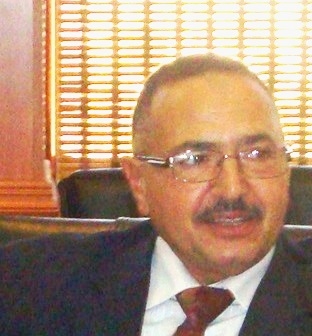Bio-SenSys project idea
il y a 5 ans;Bio-SenSys
Bio-SenSys project proposal aims at the design and development of a Satellite-based remote sensing environment for monitoring bio-organic agricultural production in Africa. The general objective of this research and innovation project is to design and develop a decision support system, based on web interfaces and mobile devices, which is built on FOSS (Free Open Source Software) and conform to European
Standards (especially the INSPRE directive). An important part of the content of this interactive information system and communication platform relies on Earth Observation tools for monitoring and assessment bio-organic agricultural production in Africa. Following an Open Data approach, Sentinel satellite data from the Copernicus Program of the European Space Agency (ESA) will be the first choice for use in this collaborative research. The choice for sentinel data is based on its advantages of
providing accurate, high resolution, timely and easy accessible information to improve the management of the environment, understand and mitigate the effects of climate change, ensure civil
food security and contribute to improving the welfare and livelihoods of the African population. As a keystone for Earth Observation (EO) science and technology, the Copernicus Sentinel satellites represent a proactive and visionary approach to meet the OpenData requirements of EO users worldwide.
The problems to be addressed by the Bio-SenSys environment are related to the evaluation of agricultural risks and the way to obtain a satisfactory food supply for the African countries. Bio-SenSys aims to develop new and innovative assessment methodologies to monitor agricultural production in Africa, by implementing an easily accessible and usable information platform. The combination of scientific field data, collected locally on farmlands in the countries of consortium members, and Sentinel-1 RADAR and Sentinel-2 multispectral EO data is of high scientific investigation value. Cognizant of the high diversity across the continent, also dominated by small holder farmers with small land holdings, the high resolution sentinel data provides a great opportunity of obviating the constraints related to EO based productivity assessment. One of the main research objectives of Bio-SenSys is to validate the contribution of Sentinel-based remote sensing capabilities for the assessment and monitoring of bio-organic production in Africa, considering the long- and short term effects of global climate change.
The African based Bio-SenSys partners will be responsible for the standardized collection of scientific field validation and comparison data based on the local situation of the prioritized research sites. They will also collect all relevant and available topographic and GIS information to be correlated with Sentinel satellite multi-temporal EO information and derived vegetation analysis layers, such as Normalized Difference Vegetation Indices (NDVI) and Soil Moisture Indices (SMI) to classify plant
species and assess plant health. The designated Bio-SenSys center at the High Institute of Agronomic Science-Chott Meriem (ISA-CM) will supervise and assist the partners with local data collection to make sure that verifiable and uniform data quality standards are achieved. Local data will be stored and processed in each of the partner’s local data centres and will be integrated into the combined Bio-SenSys Data Management Environment (BDME) at ISA-CM, implemented throughout with open data and software standards. All partner countries will therefore profit from the new and innovative qualitycontrolled data collection and analysis methodologies, which will enable them to integrate analytical products into their own current or future research applications.
Public and scientific access to the Bio-SenSys data will be provided by a dedicated Web-GIS portal to increase the uptake of the results and relevancy to stakeholders and actors in the development ;The access and use of this portal will be intuitive and content will be available initially in English,
French, German, Italian and Arabic to ensure easy accessibility and adoption to local partners, EU and African national stakeholders and their organic farm producers.
The integration of satellite data will be achieved with automated routines, in order to obtain actual and historic EO data. In the utilized FOSS environment, existing standard and new, innovative image classification routines for Sentinel-1 and Sentinel-2 satellite images will be implemented together with new algorithms, specifically to be developed for the detection of bio-organic farming. Also to be developed are a number of specific mobile-phone apps to facilitate local field-data acquisition, to conduct data queries and access analytical products through the Web-GIS portal. These
mobile applications will be developed with different functionalities, for different user levels and tasks to function also in offline mode in remote African locations.
The specific Bio-SenSys objectives are highlighted in the following points:
1. Investigate how EO techniques can discriminate between organic and non-organic agricultural fields.
2. Characterize the spectral-temporal signatures of the same types of crops grown in both conventional and organic agriculture by choosing adjacent locations.
3. Implementation of a scientific web-portal for bio-organic farming, a decision support system with integrated spatial web services, useful for local users, scientific researchers and local authorities.
4. Development of data acquisition, data management, analysis and visualisation FOSS Development of agricultural information services through easily accessible web-tools for data acquisition, data management, analysis and visualisation on different visualization platforms.
6. Mobile applications for intuitive field data acquisition, query and utility.
7. Development of automated analysis tools for the assessment of organic farming areas in African artner countries.
8. Study of organic farming plot dynamics, considering environmental phenomena and anthropogenic activities.
9. Estimate organic yields under varied geographical and socio-ecological systems.
10. Encourage the development of SME activities around Bio-SenSys services.
11. Improve food and nutrition security of local African populations.
12. Create a dialogue and forum to strengthen the EU-Africa partnership for sustainable agriculture through knowledge exchange and transfer of scientifically advanced technologies.





S'il vous plaît Se connecter pour voir cette section